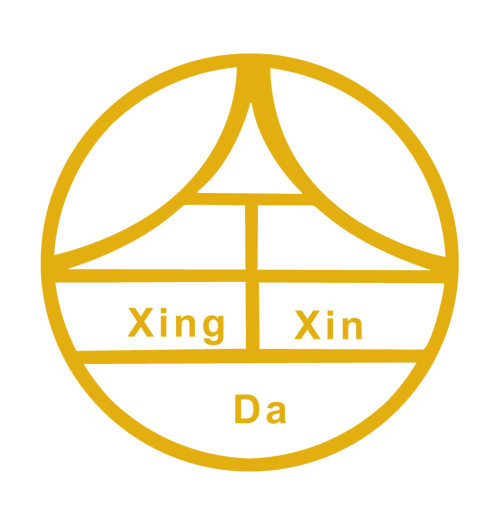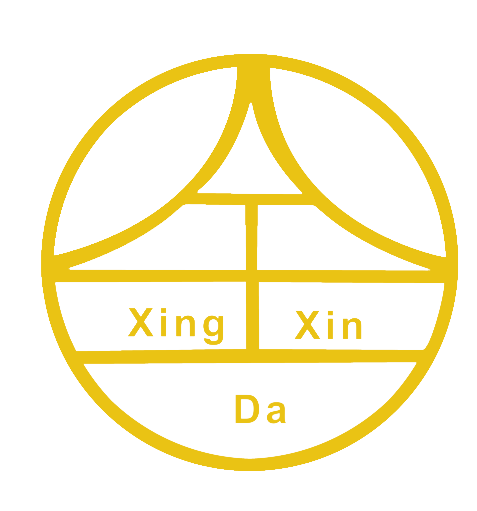ပုံစာဖြင့် ထုတ်လုပ်ထားသော ပိတ်ချီများ၏ အခြေခံအရာများကို သိရှိခြင်း
ပုံစာဖြင့် ထုတ်လုပ်ထားသော ပိတ်ချီများ ဆိုတာဘာလဲ?
ပိုးထိုးထားသော ပလီကိုတစ်ခါတစ်ရံတွင် သစ်သားဘီလူးများဟုခေါ်သည်။ ၎င်းမှာ ဒီဇိုင်းများကို ကြိုးများမှ ပြုလုပ်ထားသော သုံးစွဲရန်ပစ္စည်းများဖြစ်ပါသည်။ ထိုအရာများမှာ အနုပညာဖြင့် ထုတ်လုပ်မှု၏ တစ်စိတ်တစ်ပိုင်းအဖြစ် ရှည်လျားသော သက်တမ်းရှိပြီး နည်းပညာအသစ်များကြောင့် အချိန်ကာလအလိုက် ပြောင်းလဲမှုများစွာ ဖြစ်ပေါ်ခဲ့ပါသည်။ အတိတ်က လူများသည် ဤသို့မျှော်လင့်ထားသော ဒီဇိုင်းများကို လက်ဖြင့် အချိန်ကြာမြင့်စွာ ပြုလုပ်ခဲ့ကြသော်လည်း ယနေ့ခေတ်တွင် အများအားဖြင့် ပိုးထိုးစက်များမှ မြန်ဆန်စွာနှင့် တိကျစွာ ထုတ်လုပ်လျက်ရှိပါသည်။ ပလီတစ်ခုတွင် အဓိကအစိတ်အပိုင်း သုံးခုရှိပါသည်။ အောက်ခံပစ္စည်းမှာ အားလုံးကို ပေါင်းစပ်ထားသော ပစ္စည်းဖြစ်ပြီး ဒီဇိုင်းကို ဖော်ပြသည့် ကြိုးများ၊ ပြင်ပမျက်နှာပြင်သို့ ကပ်ရန်အတွက် အက်ကြေးများ သို့မဟုတ် ချုပ်ရန်အပေါက်များဖြစ်ပါသည်။ ပိုးထိုးမှုကို ထူးခြားစေသည့်အချက်မှာ ကြိုးများသည် အခြေခံသော သုံးစွဲရန်ပစ္စည်းကို ပတ်လည်ထားခြင်းဖြစ်ပြီး အရောင်နှင့် အမျိုးအစားများစွာကို ရောစပ်၍ အကျိုးသက်ရောက်မှုများနှင့် အသားတင်မှုများကို ဖန်တီးပေးသည်။ ထို့ကြောင့် ပုံနှိပ်ခြင်းတွင် မရရှိနိုင်သော အရာများကို ပေးစွမ်းနိုင်ပါသည်။
ကိုးပြားများနှင့် အဝတ်အစားများအတွက် အကျိုးအမြတ်များ
ပုံနှိပ်ထားသော ဒီဇိုင်းများသည် အချိန်ကြာလာသည်နှင့်အမျှ မှိန်မှိန်ဖျားဖျားဖြစ်လာခြင်း သို့မဟုတ် အက်ကွဲလာခြင်းတို့ ဖြစ်တတ်သော်လည်း ချုပ်ထားသော ပုံစံများမှာ အဝတ်အစားများကို များစွာဝတ်ဆင်ပြီးနောက် သို့မဟုတ် ဆေးကြောပြီးနောက်တွင်ပါ အရောင်တောက်ပနေခြင်း နှင့် ပုံစံကို ထိန်းသိမ်းထားနိုင်ခြင်းတို့ကို တွေ့ရပါသည်။ အထူးသဖြင့် တစ်ပါတည်းဝတ်စုံများ သို့မဟုတ် အခြားသော အကြိမ်ကြိမ်ဆေးကြောရသည့် အဝတ်အစားများအတွက် အထက်ဖော်ပြပါအချက်များမှာ အရေးပါပါသည်။ ထို့ပြင် ချုပ်ထားသော ပတ်ခ်များသည် ဖက်ရှင်ပစ္စည်းများကို ပိုမိုကောင်းမွန်စေပါသေးသည်။ အသားအရေကို ပိုမိုထူးခြားစေပြီး မိမိတို့၏ အမှတ်တရကို ပိုမိုကောင်းမွန်စွာ ဖော်ပြနိုင်စေပါသည်။ ထို့အပြင် ချုပ်ထားသော ပတ်ခ်များသည် ပုံမှန်အဝတ်အစားများသာမက အခြားသော ပစ္စည်းများပေါ်တွင်လည်း ကောင်းစွာတပ်ဆင်နိုင်ပါသည်။ အဝတ်အစားဝတ်စုံများ၊ ကြော်ငြာပစ္စည်းများ၊ အိတ်များ၊ ဂျာကင်များ စသည်တို့တွင် အဆင်ပြေစွာတပ်ဆင်နိုင်ပါသည်။ ထို့ကြောင့် ကုမ္ပဏီများအနေဖြင့် စီးပွားရေးရှုထောင့်များစွာတွင် အသုံးပြုနိုင်ပြီး အကန့်အသတ်များကို စိုးရိမ်စရာမလိုပဲ အသုံးပြုနိုင်ပါသည်။
အဝတ်အစားနှင့် အမှတ်တရားတွင် အသုံးပြုသော အများအားဖြင့် ပြုလုပ်ထားသော လုပ်ငန်းများ
ပိုမိုသတိထားမိစေရန် ရည်ရွယ်ထားသည့် မှတ်တမှတ်များအတွက် ချုပ်ထားသော ပလီကို အရေးပါသော အစိတ်အပိုင်းတစ်ခုအဖြစ် ပြောင်းလဲလာခဲ့ပါသည်။ စီးပွားရေးလုပ်ငန်းများသည် ၎င်းတို့၏ စျေးကွက်ရှာဖွေရေးစီမံကိန်းများတွင် ပလီကို ထည့်သွင်းသောကြောင့် ပိုမိုထင်ရှားစေပါသည်။ လုပ်ငန်းတစ်ခုသည် ၎င်း၏ လိုဂိုကို ချုပ်ထားသော ပလီတွင် တင်ဆောင်လျှင် လူများသည် အခြားနေရာတွင် လိုဂိုကိုကြည့်ရုံသက်သက်ထက် ပိုမိုမှတ်မိကြပါသည်။ ဖက်ရှင်ပရိတ်သတ်များကလည်း ပလီများကို နှစ်သက်ကြပါသည်။ အဘယ်ကြောင့်နည်းဟူမူ ကိုယ်ပိုင်စွာ ထုတ်ဖော်ပြသနိုင်သောကြောင့် ဖြစ်ပါသည်။ ဆိုင်တစ်ဆိုင်ထဲသို့ လှမ်းဝင်လိုက်ပါ၊ အွန်လိုင်းတွင် လမ်းဘေးဖက်ရှင်ဓာတ်ပုံများကို ကြည့်လိုက်ပါ၊ ပလီများသည် ဘောမ်ဘာဂျက်များမှသည် ဘေ့စ်ဘောခေါင်းစဥ်များနှင့် ပိုက်ဆံအိတ်များအထိ တန်ဆာပလာပြုလုပ်ထားပါသည်။ အားကစားပြိုင်ပွဲများ သို့မဟုတ် နွေရာသီကောလိပ်များတွင် အဖွဲ့အစည်းများသည် အဖွဲ့ဝင်များကို သိရှိနိုင်ရန်အတွက်သာမက အမှတ်တရအဖြစ်လည်း ပြုလုပ်ထားသော ပလီများကို မကြာခဏ ဖြန့်ဝေပေးကြပါသည်။ ပါဝင်သူများသည် ၎င်းတို့သွားရောက်ခဲ့သည့်နေရာများနှင့် အတူတူကြုံတွေ့ခဲ့သည့် အတွေ့အကြုံများအကြောင်း ဇာတ်လမ်းများကို ပြောပြသည့် သေးငယ်သော စာတန်းများကို အိမ်သို့ယူလာကြပါသည်။ အမှန်အားဖြင့် ဖက်ရှင်လောကနှင့် ကော်ပိုရိတ် မှတ်တမှတ်များတွင် ချုပ်ထားသော ပလီများသည် အံ့သြဖွယ်ကောင်းသော ရလဒ်များကို ပေးစွမ်းနိုင်သောကြောင့် ကျွန်ုပ်တို့ ကြည့်ရှုနေရာတိုင်းတွင် ပြန်လည်တွေ့ရှိနေရပါသည်။
အမှတ်တင်ပုဒ်များအတွက် အရွယ်အစားမြင့်မားသောဒီဇိုင်းများ၏ အခြေခံဒီဇိုင်းသီအိုရီများ
အကောင်းဆုံး ရောင်ချယ်မှန်သော ကိရိယာတွင် ရောင်ပြောင်းလဲမှု နှင့် ရွေးချယ်မှု
ပုံနှိပ်ထားသော ဒီဇိုင်းများကို ဆွဲဆောင်နိုင်စေရန် အရောင်များနှင့် ကြိုးအမျိုးအစားများကို ဂရုတစိုက်ရွေးချယ်ရန် အရေးကြီးပါသည်။ အရောင်ကွာခြားမှုကောင်းမွန်ခြင်းသည် ပတ်ခ်များကို အမြင်အားဖြင့် ထင်ဟပ်စေပြီး ဒီဇိုင်းများသည် ပိုမိုရှင်းလင်းစွာ ထင်ဟပ်လေ့ရှိသောကြောင့် ပိုမိုကောင်းမွန်သော အနေအထားကို ဖန်တီးပေးပါသည်။ ဥပမာအားဖြင့် မှောင်သောနောက်ခံပေါ်တွင် အလင်းရောင်များသည် အမြင်ကိုဆွဲဆောင်နိုင်ပြီး ရည်ရွယ်ထားသော မက်ဆေ့ချ်ကို ထိရောက်စွာ ဖော်ပြပေးပါသည်။ ကြိုးအမျိုးအစားကို ရွေးချယ်ခြင်းသည် အရေးကြီးပါသည်။ ရေယွန်းကြိုးသည် လူတို့မကြာခဏလိုအပ်သော တောက်ပသောအဖြစ်ကို ပေးစွမ်းနိုင်သော်လည်း ပိုလီစတာကြိုးသည် အချိန်ကြာလာသည်နှင့်အမျှ ပိုမိုကောင်းမွန်စွာခံနိုင်ရည်ရှိပါသည်။ အထူးသဖြင့် ပတ်ခ်များကို အသုံးပြုမှုများခြင်း သို့မဟုတ် ပုံမှန်အားဖြင့် ဆေးကြောရန်လိုအပ်သော အခြေအနေများတွင် အရေးကြီးပါသည်။ အမှတ်တရပစ္စည်းများကို ထုတ်လုပ်သည့် ကုမ္ပဏီများသည် အရောင်များက လူတို့၏ စိတ်ခံစားမှုများကို မည်သို့ဖြစ်စေသည်ကိုလည်း စဉ်းစားသင့်ပါသည်။ အပြာရောင်သည် ယုံကြည်စိတ်ချရမှုကို ဖော်ပြသော်လည်း အနီရောင်သည် စွမ်းအင် သို့မဟုတ် စိတ်လှုပ်ရှားမှုကို ဖော်ပြပြီး အချို့သော စျေးကွက်ရှာရေးရည်မှန်းချက်များအတွက် ကောင်းမွန်စွာကိုက်ညီပါသည်။
အက္ခရာအမျိုးအစားများ: အကြီးမားသော အမျိုးအစားနှင့် ရှုပ်ထွေးသော အမျိုးအစား
ပက်ခ်ျပေါ်မှာ စာသားတွေ ပုံစံထွက်လာပုံက စာသားမှာ ပြောတာကို နားလည်မှုအပေါ်မှာ ကွာခြားမှုဖြစ်စေပါတယ်။ ဖောင့်ရွေးချယ်မှုက ဖတ်ရလွယ်ကူမှုအပေါ်မှာသာမက ဒီဇိုင်းတစ်ခုလုံးကို လူတွေက ဘယ်လိုမြင်ကြတယ်ဆိုတာအပေါ်မှာလည်း သက်ရောက်မှုရှိပါတယ်။ အက္ခရာကြီးတွေနဲ့ ထန်းလျော်တွေက ပက်ခ်ျကို အဝေးကနေ ဖတ်ရတဲ့အခါမှာ အကောင်းဆုံးဖြစ်ပါတယ်။ ဒါက အားကစားပစ္စည်းတွေ သို့မဟုတ် အလုပ်ဝတ်စုံတွေမှာ အထူးအရေးပါတဲ့ အမြင်အာရုံကို အထောက်အကူပြုပါတယ်။ နောက်တစ်ဖက်မှာတော့ အလှဆင်စာလုံးပုံစံတွေ သို့မဟုတ် ရှုပ်ထွေးတဲ့ ဖောင့်တွေက အဆင့်မြင့်တဲ့ အသွင်ကို ဖော်ပြပေးနိုင်ပြီး အထူးသဖြင့် အမှတ်တရပစ္စည်းတွေ သို့မဟုတ် အလှကုန်ပစ္စည်းကုမ္ပဏီတွေအတွက် အထူးသင့်တော်ပါတယ်။ မိမိတို့ ဘရန်းအမှတ်တံဆိပ်ကို ကိုယ်စားပြုတဲ့ စာလုံးပုံစံကို ကိုက်ညီအောင်ထားခြင်းက ဒီဇိုင်းတစ်ခုလုံးကို တစ်ပြေးညီဖြစ်စေပါတယ်။ ကလေးငယ်ဝတ်စုံတွေအတွက်ဆိုရင် ပျော်စရာကောင်းပြီး ပြုတ်ခုန်နိုင်တဲ့ စာလုံးပုံစံမျိုးကို ရွေးချယ်မှာဖြစ်ပြီး နည်းပညာစတင်အပ်စ်တွေကတော့ ယနေ့ခေတ်မှာ ပရော်ဖက်ရှင်နယ်နဲ့ ရှေ့ရေးကိုကြည့်တဲ့ပုံစံကို ပြသနိုင်တဲ့ သန့်ရှင်းတဲ့ မျဉ်းကြောင်းတွေနဲ့ ရိုးရှင်းတဲ့ပုံစံတွေကို အသုံးပြုကြပါတယ်။
အသေးစိတ်နှင့် ရောင်းရန်အကြား ပြောင်းလဲမှု
အရည်အသွေးမြင့် ပက်ခ်ျ (patch) များဒီဇိုင်းဆွဲသည့်အခါ အသေးစိတ်ပါသော ပန်းပုလက်ရှိန်းမှုနှင့် ရိုးရှင်းမှုကို ထိန်းထားခြင်းတို့၏ အချိုးအစားမှန်ခြင်းသည် အလွန်အရေးပါပါသည်။ ရှုပ်ထွေးသောဒီဇိုင်းများသည် အနုပညာရှင်၏ ကျွမ်းကျင်မှုကို ပြသနိုင်သော်လည်း တခါတရံတွင် ထိုသို့သော အသားပေးအချက်များသည် အခန်းတစ်ခု၏ တစ်ဖက်တွင်မှ ကြည့်သည့်အခါ ဆုံးရှုံးတတ်ပါသည်။ ရိုးရှင်းသောဒီဇိုင်းများသည် အကွာအဝေးမှ ပိုမိုထင်ရှားစေပြီး လူများသည် အမှတ်အသားကို အမြန်စွာ မှတ်မိနိုင်ပါသည်။ ဤသည်မှာ ကုမ္ပဏီများ၏ လိုဂိုများကို ပေါ်လောပေါ်ပေါ် မြင်တွေ့စေရန် သို့မဟုတ် အသင်းများအတွက် ရှင်းလင်းသော အမှတ်အသားများလိုအပ်သည့်အခါတွင် အရေးပါသော ကွာခြားချက်ဖြစ်ပါသည်။ ပို၍ရိုးရှင်းသော ပုံစံသည် မှတ်ဉာဏ်တွင် ပို၍လွယ်ကူစွာ ကပ်လောင်းနိုင်ပါသည်။ ဥပမာအားဖြင့် Apple ၏ နာမည်ကျော် သစ်သီးလိုဂိုကို စဉ်းစားကြည့်ပါ။ တစ်ကြိမ်တည်း မြင်ဖူးသူများပင် ထိုပုံစံကို မမေ့လျော့ကြပါ။ ပက်ခ်ျများဖန်တီးသည့်အခါ အသေးစိတ်နှင့် ရိုးရှင်းမှုကြားတွင် အကောင်းဆုံးအချိုးအစားကို ရှာတွေ့ခြင်းသည် ဖန်တီးမှုသည် ရည်ရွယ်သော အသုံးပြုမှုအတွက် အလုပ်ဖြစ်ပြီး ကြည့်ရှုသူများနှင့် တိုက်ရိုက်ဆက်သွယ်မှု ရှိစေမည့်အရာဖြစ်ပါသည်။
အရာဝတ္ထုများနှင့် အမှန်တရားဆိုင်ရာ နည်းပညာများကို ရွေးချယ်ခြင်း
Fabric Types: From Twill to Felt
အရည်အသွေးမြင့် ပန်ကာထည်များ ပြုလုပ်ရာတွင် ပိုက်ဆံအများကြီး သက်သာစေမည့် ပိုက်ဆံဖြင့် ပြုလုပ်သည့် ပန်ကာထည်များကို ရွေးချယ်ခြင်းသည် အရေးကြီးပါသည်။ ဥပမာအားဖြင့် တွဲဝဲလ်ကို ယူပါ။ လူတို့သည် ထိုထည်ကို နှစ်သက်ကြပါသည်။ အဘယ်ကြောင့်ဆိုသော် ထိုထည်သည် အစဉ်တစိုက် တည်တံ့ပြီး ထိတွေ့မှုအားဖြင့် ချောမွေ့သော ခံစားမှုကို ပေးစွမ်းနိုင်သောကြောင့် ဖြစ်ပါသည်။ ထို့ကြောင့် ကုမ္ပဏီများစွာသည် မိမိတို့၏ ပန်ကာထည်များအတွက် တွဲဝဲလ်ကို ရွေးချယ်ကြပါသည်။ အခြေခံ လိုဂိုများ သို့မဟုတ် ရှုပ်ထွေးသော ပန်းချီပုံများကိုပါ ပြုလုပ်လိုသည့် အခါတွင်ပါ။ တွဲဝဲလ်၏ ပုံစံသည် ချုပ်ခြင်းပညာရှင်များအား အသေးစိတ်အချက်များကို ဖန်တီးရာတွင် တကယ့်ကို ဖန်တီးမှုအပိုင်းကို ပေးစွမ်းနိုင်ပါသည်။ မိုက်ခရိုဖိုင်ဘာသည် ပိုမိုထူထပ်သော ပန်ကာထည်များအတွက် အကောင်းဆုံးဖြစ်ပါသည်။ အထူးသဖြင့် ဆောင်းရာသီတွင် အသုံးပြုသော ပစ္စည်းများနှင့် ဆက်စပ်နေသော ပျော့ပြောင်းပြီး ပြောင်းလဲနေသော ပုံစံကို ဖန်တီးလိုသည့်အခါတွင် အသုံးပြုသည်။ ပိုလီအက်စတာ ရောစပ်ထည်များသည် အခြားတစ်မျိုးသော ရွေးချယ်စရာဖြစ်ပါသည်။ ဤရောစပ်ထည်များသည် ပိုက်ဆံကုန်ကျစရိတ်ကို သက်သာစေပြီး အားသာချက်များကို မစွန့်လွှတ်ဘဲ အရည်အသွေးမြင့် ပုံစံကို ဖန်တီးပေးနိုင်ပါသည်။ အထူးသဖြင့် ပိုက်ဆံကုန်ကျစရိတ်ကို သက်သာစေပြီး အရည်အသွေးမြင့် ပစ္စည်းများကို ဝယ်ယူခြင်းနှင့် အနိမ့်စား အစားထိုးပစ္စည်းများကို ရွေးချယ်ခြင်းတို့ကြားတွင် အလယ်အလတ် အကောင်းဆုံးရွေးချယ်စရာဖြစ်ပါသည်။ ထို့ကြောင့် တွဲဝဲလ်ကဲ့သို့ ခံနိုင်ရည်ရှိသော ပန်ကာထည်များ လိုအပ်သည့်အခါတွင် သို့မဟုတ် ဖဲလ်၏ အထူးသဖြင့် ပျော့ပြောင်းသော ခံစားမှုကို လိုအပ်သည့်အခါတွင် ပန်ကာထည်၏ ရွေးချယ်စရာများသည် မိမိ၏ လိုအပ်ချက်နှင့် ဘတ်ဂျက်အတွက် ကိုက်ညီသော ပန်ကာထည်ကို ရွေးချယ်နိုင်မည်ဖြစ်ပါသည်။
Iron-On vs. Sew-On Patches
အဝတ်အစားများကို ပိုမိုကြာရှည်စွာ သုံးနိုင်ရန်နှင့် ပိုမိုဆွဲဆောင်မှုရှိစေရန်အတွက် အပူဖြင့်ပြုလုပ်သော ပက်ချ်များနှင့် ချုပ်လုပ်သော ပက်ချ်များအကြား ကွာခြားချက်ကို နားလည်ခြင်းသည် အရေးကြီးပါသည်။ အပူဖြင့်ပြုလုပ်သော ပက်ချ်များသည် အိမ်တွင် အသုံးပြုသော သံမှပြုလုပ်ရုံဖြင့် အလွန်လွယ်ကူစွာ တပ်ဆင်နိုင်သောကြောင့် လူကြိုက်များပါသည်။ ဂီတာဂုဏ်ယူသော အဝတ်အစားများ၊ ပိုက်ဆံအိတ်များ သို့မဟုတ် အခြားပစ္စည်းများတွင် ဒီဇိုင်းများထည့်သွင်းရာတွင် အမြန်ပြင်ဆင်လိုသူများက ဤပက်ချ်များကို နှစ်သက်ကြပါသည်။ အပ်နှင့်ချုပ်ရေးများကို မလုပ်လိုသော်လည်း အဝတ်အစားများတွင် ပုဂ္ဂိုလ်ရေးအမှတ်အသားများ ထည့်သွင်းလိုသော လက်မှုပညာရှင်များကြားတွင် အထူးပြောရလျှင် လူကြိုက်များပါသည်။ အခြားဘက်တွင်မူ ပက်ချ်များကို ချုပ်လုပ်ထားခြင်းသည် အပူဖြင့်ပြုလုပ်ထားသော ပက်ချ်များနှင့် နှိုင်းယှဉ်ပါက ပိုမိုကြာရှည်စွာ ခံနိုင်သည်။ အမှန်တကယ်ချုပ်လုပ်ထားသော ပက်ချ်များသည် ပုံမှန်အားဖြင့် အသုံးပြုမှုနှင့် စက်ဖြင့် လေးချေးခြင်းတို့ကို ပိုမိုကောင်းမွန်စွာခံနိုင်သည်။ စမ်းသပ်မှုအချို့အရ ချုပ်လုပ်ထားသော ပက်ချ်များသည် အပူဖြင့်ပြုလုပ်ထားသော ပက်ချ်များထက် ငါးဆအထိ ပိုမိုကြာရှည်စွာ ခံနိုင်သည်ဟု ပြသခဲ့ပါသည်။ ထို့ကြောင့် ဘယ်အရာက အကောင်းဆုံးလဲဆိုတာကတော့ ကျွန်တော်တို့ပြောနေတဲ့ ပစ္စည်းအမျိုးအစားပေါ်မူတည်ပါတယ်။ နေ့စဉ်ဝတ်ဆင်သော ပစ္စည်းများ သို့မဟုတ် မကြာခဏလေးချေးရသော ပစ္စည်းများအတွက် ချုပ်လုပ်ထားသော ပက်ချ်များကို ရွေးချယ်သင့်ပါသည်။ သို့သော် ကြာရှည်ခံမှုထက် အမြန်ပြင်ဆင်ရန် အရေးကြီးပါက အပူဖြင့်ပြုလုပ်သော ပက်ချ်များက အလုပ်ကို ကောင်းစွာလုပ်ဆောင်ပေးပါလိမ့်မည်။
ပိတ်ဆိုင်ရာ Borders နှင့် Finishes
ပုံစံတူ ပိုက်ခ်များတွင် အထူးသဖြင့် အနားတွင် အနားသတ်အလှဆင်များ ထည့်ခြင်းဖြင့် ပိုက်ခ်များ၏ အလှကို ပိုမိုထင်ရှားစေပါသည်။ အနားတွင် မာရော် (merrowed) သို့မဟုတ် ပူပြင်း (hot-cut) အနားသတ်များကို ရွေးချယ်ခြင်းသည် ပိုက်ခ်၏ အနားများကို ထင်ရှားစေပြီး ပိုက်ခ်၏ အနှစ်သာရကို ပိုမိုကောင်းမွန်စေပါသည်။ မာရော်အနားသတ်များသည် ဓာတ်ပုံခြက်များကဲ့သို့ အနားကို ပတ်လည်ထားသော အနားသဏ္ဍာန်ကို ပေးစွမ်းပါသည်။ ထို့ကြောင့် ပိုက်ခ်ကို ပိုမိုချုပ်သပ်စေပါသည်။ ပူပြင်းအနားသတ်များသည် အသေးစိတ်ပုံစံများနှင့် ခေတ်မှီပုံစံများအတွက် အကောင်းဆုံးဖြစ်ပြီး ထောင့်များကို ထင်ရှားစေပါသည်။ အဆုံးသတ်နည်းလမ်းများကိုလည်း ဂရုစိုက်ရပါမည်။ မှောင်ခြင်း (gloss) သို့မဟုတ် ခြောက်သွေ့သောအမျက် (matte) အလ пок်များသည် ပိုက်ခ်ကို ထိတွေ့သည့်အခါ ခံစားမှုကို ပြောင်းလဲစေပြီး ပထမဆုံးတွေ့မြင်သည့်အခါကို သက်ရောက်ပါသည်။ ဤအသေးစိတ်အချက်များကြောင့် ပုံမှန်ပိုက်ခ်များကို အာရုံဆွဲတတ်သော ပိုက်ခ်များအဖြစ်သို့ ပြောင်းလဲပေးပါသည်။ အမှတ်တရပိုက်ခ်များကို ဒီဇိုင်းဆွဲသည့်အခါတွင် အနားသတ်ပုံစံများနှင့် အလ пок်များကို ကျွမ်းကျင်စွာသိရှိခြင်းဖြင့် မိမိကုမ္ပဏီ၏ ရည်ရွယ်ချက်ကို တိကျစွာ ထင်ဟပ်စေသော ပိုက်ခ်များကို ဖန်တီးနိုင်ပါသည်။
ဖန်တီးရေးလုပ်ငန်းအတိုင်းအတာ
ဒီဇိုင်းဆော့ဖ်ဝဲအသုံးပြုခြင်း (Vector vs. Bitmap)
ပုံစံအမျိုးမျိုး ဖန်တီးရာတွင် မူလပုံစံဖိုင်အမျိုးအစားကို ရွေးချယ်မှုသည် အရေးကြီးပါသည်။ ရောင်စဉ်ပုံစံများသည် အရည်အသွေး မည်သည့်အခါမှ မဆုံးရှုံးဘဲ အရွယ်အစားကို ကျယ်စေခြင်း သို့မဟုတ် ကျုံ့စေခြင်းတို့အတွက် အကောင်းဆုံးဖြစ်ပါသည်။ အကြောင်းရင်းမှာ ရောင်စဉ်ပုံစံများသည် ပုံမှန်ပစ္စည်းများအစား သင်္ချာဆိုင်ရာပုံစံများကို အသုံးပြုသောကြောင့် အရွယ်အစားကို မည်မျှပြောင်းလဲသည်ဖြစ်စေ ရှင်းလင်းမှုကို ထိန်းသိမ်းထားပေးပါသည်။ ပုံမှန်ပုံစံများကိုတော့ အခြားသောပုံစံများကဲ့သို့ပင် ဖြစ်ပါသည်။ အမှတ်အသားများသည် ပုံမှန်အားဖြင့် အမှတ်အသားများကို ကျယ်စေခြင်းအားဖြင့် တွေ့ရပါသည်။ ပုံစံဖန်တီးသူများအတွက် အတွေ့အကြုံရှိပါသည်။ အများအားဖြင့် ပရော်ဖက်ရှင်နယ်များသည် Adobe Illustrator ကို အသုံးပြုကြပါသည်။ အကြောင်းရင်းမှာ ရောင်စဉ်ပုံစံများကို အကောင်းဆုံးဖြစ်စေသောကြောင့်ဖြစ်ပါသည်။ ပုံစံတည်ဆောက်ရေးကိရိယာများနှင့် ပုံစံတည်ဆောက်ရေးကိရိယာများကို အသုံးပြုခြင်းဖြင့် အခြားပရိုဂရမ်များတွင် ပုံမှန်ပုံစံများကို ပြင်ဆင်ခြင်းထက် ပိုမိုရှုပ်ထွေးသော ဒီဇိုင်းများကို ပိုမိုမြန်ဆန်စွာ ဖန်တီးနိုင်ပါသည်။
အင်ဘရိုဒါရီများအတွက် အနုပညာရေးကို ဒီဂျစ်တယ်ခြင်း
ဒစ်ဂျစ်တယ်ပြောင်းခြင်းအကြောင်းပြောတဲ့အခါ ကျွန်တော်တို့ပြောနေတာကတော့ ဖန်တီးမှုတစ်ခုကိုယူပြီးတော့ အပ်ပုံတွေကိုချုပ်ဖို့စက်တွေအတွက်အလုပ်ဖြစ်အောင်လုပ်နေတာပါပဲ။ အဓိကအားဖြင့် ပုံတွေကိုဒစ်ဂျစ်တယ်ဖိုင်တွေအဖြစ်သို့ပြောင်းလဲခြင်းဖြစ်ပြီး အပ်ချုပ်စက်ကို ဘယ်နေရာမှာချုပ်ရမလဲဆိုတာကိုညွှန်ပြတဲ့ ညွှန်ကြားချက်တွေပါဝင်ပါတယ်။ အချို့လူတွေကတော့ ဒီလုပ်ငန်းကိုလက်ဖြင့်လုပ်ဆောင်နေဆဲဖြစ်ပြီး အပ်ချုပ်ပုံစံတွေနှင့် အပ်ချုပ်သိပ်သည်းဆကို ပြင်ဆင်ပေးနေတာဖြစ်ပါတယ်။ အများစုအတွက်တော့ Wilcom သို့မဟုတ် Hatch တို့လိုဆော့ဖ်ဝဲတွေကိုအသုံးပြုပြီးဒစ်ဂျစ်တယ်ဒီဇိုင်းတွေကိုဖန်တီးရာမှာ ပိုမိုလွယ်ကူစေပါတယ်။ ဒစ်ဂျစ်တယ်ပြောင်းခြင်းကောင်းမွန်မှုသည် နောက်ဆုံးထုတ်ကုန်ကို အချိန်ကြာလာတာနှင့်အမျှ တည်တံ့ခိုင်မြဲစေမှာဖြစ်ပါတယ်။ မှန်ကန်စွာလုပ်ဆောင်ပေးပါက အပ်ချုပ်ထားသည့်နေရာတိုင်းသည် ဆပ်ပြာဖြင့်အကြိမ်ကြိမ်ဆေးကြောပြီးနောက်တွင်လည်း မပျက်မစီးဖြစ်နေမှာဖြစ်ပြီး အသုံးပြုမှုနှင့် သန့်ရှင်းရေးပြုလုပ်မှုများကို မည်မျှကြိမ်ပြုလုပ်သည်ဖြစ်စေ အပ်ပုံများကိုပိုမိုကောင်းမွန်စေပါတယ်။
မီးမောင်းပတ်ချီများကို ပြန်လုပ်ခြင်းနှင့် အာမခံခြင်း
ကျွန်တော်တို့အမြဲလိုအပ်သည့်အရာမှာ စီးပွားဖြစ်ထုတ်လုပ်မှုကို စတင်ရန်မလုပ်မီ နမူနာပစ္စည်းများကို သေချာစွာစစ်ဆေးရန်ဖြစ်ပါသည်။ နမူနာများကိုစစ်ဆေးခြင်းဖြင့် ပုံစံများသည် အထည်ပေါ်တွင် တည်ဆောက်မှုအတိုင်းအတာနှင့် ပြင်ဆင်ရန်လိုအပ်သည့် အခက်အခဲများကို တွေ့ရှိနိုင်ပါသည်။ ဤအဆင့်တွင် တုံ့ပြန်မှုများရယူခြင်းသည် အရေးကြီးပါသည်။ တစ်ခါတစ်ရံတွင် ပရောဂျက်နှင့် နီးကပ်စွာဆက်စပ်နေသည့်အခါ လူများက သေးငယ်သောအချက်များကို လွတ်သွားတတ်ကြပါသည်။ ထို့ကြောင့် အသစ်သောအမြင်များက ထိုပြဿနာများကို ဖမ်းဆုပ်ပေးနိုင်ပါသည်။ တုံ့ပြန်မှုများပေးသည့်အခါတွင် ရောင်စဉ်များသည် ရည်ရွယ်ချက်အတိုင်းဖြစ်ပါသလား၊ ချုပ်ထားသည့်အမှတ်များသည် ဘယ်လောက်အထိ သန့်ရှင်းသလဲ၊ အထည်သည် အသားနှင့်ထိတွေ့သည့်အခါ ခံစားမှုများကို အာရုံစိုက်ပါသည်။ ဤနောက်ပြန်လှည့်သော အချိန်ကို အသုံးပြုခြင်းသည် ကျွန်တော်တို့၏ ထုတ်ကုန်များကို တိကျမှုရှိပြီး အရည်အသွေးမြင့်မားစေရန် ကွာခြားမှုကို ဖြစ်ပေါ်စေပါသည်။ ဖောက်သည်များသည် ဤအသေးစိတ်များကို သတိပြုမိကြပါသည်။ ထို့ကြောင့် ဤနေရာတွင် အပိုအချိန်ကို အသုံးပြုခြင်းသည် အကျိုးအမြတ်များစွာ ရရှိစေပါသည်။ အရာအားလုံးကို စစ်ဆေးပြီးပြီဖြစ်ပြီး ကျွန်တော်တို့၏ နောက်ဆုံးအတည်ပြုချက်ကို ပေးလိုက်သည့်အခါတွင် ကျွန်တော်တို့၏ မိတ်ဆွေအမှတ်တံဆိပ်သည် ကိုယ်ပိုင်သဏ္ဍာန်ကို ထိန်းသိမ်းထားပြီး အလုပ်လုပ်ရာတွင် ကောင်းမွန်ပြီး အလှပြင်သောအရာကို တစ်စုတစ်စည်းတည်း ပေးဆောင်နိုင်မည်ဖြစ်ပါသည်။
Custom Patches ကို ထိန်းချုပ်ထားခြင်းနှင့် အသုံးပြုခြင်း
Patches ကို ပိုင်းခြားစွာ ခတ်ဆွဲခြင်း
ပတ်စ်တွေကို အဝတ်အစားများပေါ်တွင် တံဆိပ်ခတ်ထားသည့်အတိုင်း တွဲကပ်နေစေရန် အရေးကြီးပါသည်။ အများအားဖြင့် ပတ်စ်တွေကို ချုပ်ခြင်းဖြင့် သို့မဟုတ် ပံ့ပိုးပေးသည့် ပစ္စည်းများကို အသုံးပြုခြင်းဖြင့် တွဲကပ်နေစေရန် လုပ်ဆောင်ကြပါသည်။ ချုပ်ခြင်းသည် ပိုမိုကြာရှည်ပြီး ပတ်စ်နှင့် အဝတ်အစားကြားတွင် ခိုင်မာသော ချုပ်ဆက်မှုကို ဖန်တီးပေးပါသည်။ သို့ရာတွင် ပတ်စ်တွေကို သံဖိသံဖြင့် အပူပေးပြီး တွဲကပ်နိုင်သည့် နည်းလမ်းမှာ အလွန်မြန်ဆန်ပါသည်။ သံဖိသံဖြင့် အပူပေးလိုက်သည့်အခါ တွဲကပ်သွားပါပြီ။ သို့ရာတွင် အမှန်အကန်ပြောရလျှင် ပတ်စ်တွေကို ချုပ်ထားသည့် နည်းလမ်းမှာ ပိုမိုကြာရှည်ပါသည်။ တွဲကပ်နေစေလိုပါသလား။ အကောင်းဆုံး အလုပ်ဖြစ်သည့် နည်းလမ်းမှာ အောက်ပါအတိုင်းဖြစ်ပါသည်-
1. အဖို့ခြင်းနည်း : ပါတ်၏ အနားဖက်တွင် အားကောင်းသော အဖို့မျဉ်းနှင့် ပိတ်ပင်ထားသည့်အတွက် အရှိန်ကို တိုးမြှင့်ပါ။
2. အားလုံးနည်း : အရည်အသွေးမြင့်သော အားလုံးများကို ရွေးချယ်ပြီး ထုတ်ပေးသူ၏ အကြောင်းအရာများကို လိုက်နာပါ။
3. ပုံမှန် စစ်ဆေးခြင်း : အချိန်တစ်ပြင်လုပ်ကြည့်ရှုပါသည်။ အထုပ်များ၏ ဖွံ့ဖြိုးမှုသို့မဟုတ် ဆောင်းကို အထုပ်ပြုပြင်ပြီးနောက် သို့မဟုတ် ဝင်ဆောင်ပြီးနောက် အထုပ်များ၏ ပြင်ပြင်ဆင်ဆင်ရာတွင် အပြင်အဆင်များကို ထိန်းသိမ်းပါ။
အထုပ်များ၏ ဆောင်းသို့မဟုတ် ဖွံ့ဖြိုးမှုကို တွေ့ရှိလျှင် ပိုမိုသော ပြဿနာများမပေါ်မီ အထုပ်ကို ပြင်ပြင်ဆင်ဆင်ရာတွင် လုပ်ဆောင်ပါ။ အထုပ်များ၏ အပြင်အဆင်များကို ထိန်းသိမ်းပါ။
သန်းခေါင်းများနှင့် ရှည်ကျော်လုပ်ငန်းစဉ်
အထုပ်များကို ပြုလုပ်ထားသော အထုပ်များကို သန်းခေါင်းရှိရန် အထူးသဖွယ် လုပ်ဆောင်ရန် လိုအပ်ပါသည်။ အထုပ်များကို သန်းခေါင်းရှိရန် အကောင်းဆုံး နည်းလမ်းများကို အောက်ပါအတိုင်း ဖော်ပြထားပါသည်။
1. လျော့ချထားသော သန်းခေါင်း : အနည်းငယ်သော ဆိတ်မှုနှင့် လျှောစွာရေကို အသုံးပြု၍ ပိတ်ချိတ်မှုများကို လက်ဖြင့်ဆိတ်ထုတ်ပါ၊ ပိတ်ချိတ်မှုကို ဆောင်းပါးစွာ ဆိတ်ထုတ်သော ဓါတ်ပုံများနှင့် ဆေးဝါးများကို ရှောင်ရှားမှုများကို ကျော်လွှားပါ။
2. လေဖြင့် သွေးခြင်း : ဆိတ်ပြီးနောက်၊ ဒရောယာဘားကို အသုံးပြုခြင်းဖြင့် ပိတ်ချိတ်မှုကို ကြီးမားလာစေသော်လည်း သောက်ပစ္စည်းကို သောက်ပြီး လျှောစွာ သွားပါ။
3. သင့်လျော်သော သိမ်းဆည်းမှု : ပိတ်ချိတ်မှုပစ္စည်းများကို ပြောင်းလဲမှုများနှင့် ရေပြားမှုကို ရှောင်ရှားမှုများမရှိစေရန် အပူချိန်နှိုင်းတွင် အပြားပြီး သို့မဟုတ် ချင်းထားပါ။
အောက်ပါအတိုင်း အားလုံးကို မြင်သာစွာ ထိန်းသိမ်းပြီး ပိတ်ချိတ်မှုများကို အရက်နှင့် အပူချိန်တွင် ရှောင်ရှားမှုများမရှိစေရန် အားလုံးကို အရက်ကို ဆင်းသက်စေရန် အရေးကြီးသော အလုပ်များကို လုပ်ဆောင်ပါ။
ကပ်လျက်ရှိသော ပိတ်ချိတ်မှုများကို ရှာဖွေရန်
နေရာချိန်အလိုက် ပြင်ဆင်ခြင်းဝန်ဆောင်မှုတွေကို ရှာဖွေတာနဲ့ ကိုယ်စားပြုသော အပိုင်းအထောက်အထားကို ချိန်ချင်းထားပေးရန်နှင့် ကိုယ်ပိုင်စီးပွားရေးအဖွဲ့အစည်းကို ထောက်ခံရန်အတွက် အကျိုးသက်ရောက်မှုရှိပါတယ်။ အကြံပြုမှုတွေကို အကောင်အထည်ဖော်ပြထားသည့် နည်းလမ်းများကို သိရှိရန် အောက်ပါအတိုင်း လေ့လာပါ:
1. အင်တာနက်ရှိ ဒေတာဘေ့စ်များ : Google Maps သို့မဟုတ် Yelp အတိုင်း ပြင်ဆင်ခြင်းဆိုင်များကို ရှာဖွေပြီး သူတို့၏ qualité နှင့်ဝန်ဆောင်မှုအကြောင်း အမြဲတမ်းဖော်ပြထားသော အကြောင်းအရာများကို ဖတ်ရှုပါ။
2. နေရာချိန်အလိုက် အကြံပြုချက်များ : ပြင်ဆင်ခြင်းအတွက် စိတ်ဝင်စားသော အဖွဲ့အစည်းများ သို့မဟုတ် အဖြစ်အပျက်အကြောင်း ဆောင်းပါးများကို မေးမြန်းပါ။
3. အကြောင်းအရာများ : အသိပ်တောင်များကို 渠တို့၏ အတန်းအတာ၊ လုပ်ငန်းရှင်း၊ အချီများနှင့် anggan feedback တို့အား အခြေခံ၍ 昡ွန်းကျေးဇူးရှိမှုစ준်နှင့် ထူးခြားသော လုပ်ဆောင်ချက်အတွက် လိုအပ်ချက်များကို ကိုယ်စားပြုစေရန် ချိန်မှန်သည်.
ဒေသအတွင်းရှိ အင်ဘရိုးဒါးဝန်ဆောင်မှုများသည် လူမှုရေးဆက်ဆံခြင်းကို ပိုမိုလုပ်ဆောင်နိုင်ပြီး ပိုမိုမြန်မြောက်သော အချိန်များကို ဖြန့်ဖြူးပေးနိုင်ပြီး ကိုယ်ပိုင်ဆိုင်ရာဝန်ဆောင်မှုများကို တိုးတက်စေရန် ကောင်းမွန်သော အမှန်တရားနှင့် သိပ္ပံရောင်းဝယ်မှုကို ပိုမိုတိုးတက်စေပါသည်.





